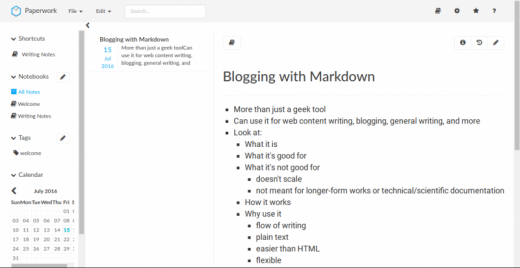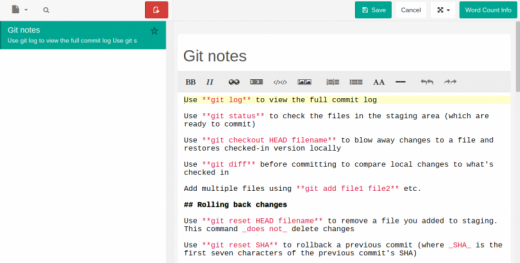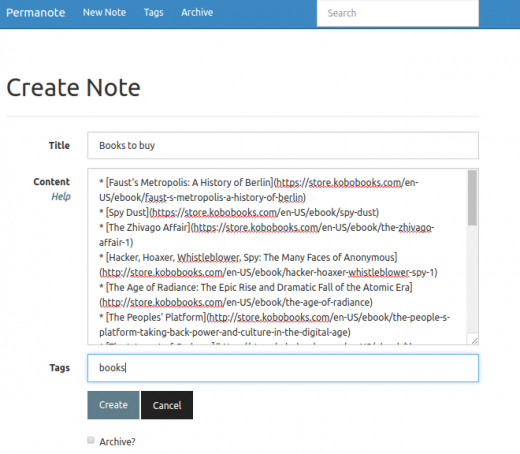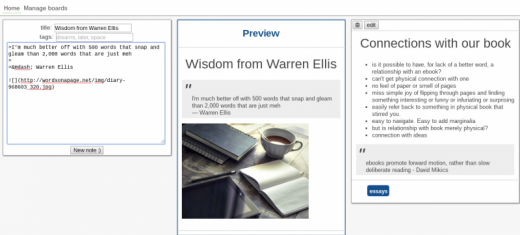[ad_1]
Information: Whether we realize it or not, we collect a lot of it—interesting snippets, links, research for school or work, recipes, quotes, and a whole lot more.
Millions of people turn to Evernote to organize all that information. There’s no denying that Evernote is a useful and powerful tool. But it’s also a closed source one.
Maybe you want to take control of your information and move away from a closed, proprietary tool. Maybe you’re disgruntled about the recent changes to Evernote’s services. Maybe you just want to take notes the open source way. Whatever your reasons for moving away from Evernote, there are open source alternatives out there.
Let’s take a look at four of those alternatives.
Before we begin, I need to point out that the four applications I look at in this article aren’t feature-for-feature replacements for Evernote. They do lack some of what Evernote offers, especially mobile and desktop clients. Don’t discount these applications for what they lack. Instead, look deeper and see what they can offer you.
Paperwork
Of the four notetaking applications I look at in this article, Paperwork is the closest to Evernote in both feel and features.
Paperwork lets you organize your notes in notebooks and tag those notes so you can easily find them. You can also attach files—like images or PDFs—to your notes. Paperwork embeds the images into the bodies of your notes, and it treats other documents (such as PDFs) like email attachments.
You can even import your notes from Evernote into Paperwork. Keep in mind, though, the import features is experimental and sometimes fails.

Laverna
Laverna is a close second to Paperwork in the running for a feature-rich replacement for Evernote. You can format your notes with Markdown (a lightweight markup language that uses keyboard symbols to denote formatting). Don’t worry if you don’t know Markdown. You can add formatting with a click using Laverna’s toolbar.
Laverna doesn’t have notebooks or tags, though its search engine does a pretty good job of finding notes. On top of that, you can embed images into your notes with a couple of clicks.
Unlike the other applications I talk about in this article, Laverna has desktop clients for Linux, Mac OS, and Windows which you can download from its website. There’s also a no-cost hosted version that you can access with any web browser.

Permanote
Permanote is simple. In fact, it’s quite barebones. It’s just you and your notes.
Permanote doesn’t let you collect your notes in notebooks, but it has a very good search engine. You can use tags to organize and filter your notes. It seems messy, but it works.
Like Laverna, can format your notes in Permanote using Markdown. Permanote also lets you insert images into your notes. Do that by dragging and dropping or them on the note. Permanote is pretty basic, but it does its job quite effectively.

Brainstorm
Brainstorm is more of an alternative to Google Keep than to Evernote. That said, it’s a good choice if you want or need a simple way to take notes.
In Brainstorm, your notes are called boards. As you create a new board, Brainstorm offers a live preview of what you’re writing. Brainstorm is quite spartan and, as you can see from the screen capture below, not all that visually appealing. It’s not plain, though. You format your notes with Markdown. You can’t attach images to a note, but you can point to one somewhere on the web.
Brainstorm doesn’t let you save a note without adding one or more tags to it. It can be annoying at first, but does make sense. Why? Brainstorm doesn’t offer you a way to organize your notes nor does it have a search function.

Getting and using these applications
Unlike Evernote, the four applications I discuss in this article (aside from Laverna) aren’t hosted—there’s no convenient link to follow to log in and use them. If you have your own server or a web hosting account and want to embrace your inner geek a bit, you can download and install each of these applications.
One of the easiest ways to use them is via Sandstorm Oasis, which describes itself as “an open source operating system for personal and private clouds.” Installing these note taking tools only takes a couple of clicks, and you can access them from wherever you have an internet connection.
What’s your favorite open source application for taking notes? Share your pick by leaving a comment below.
[ad_2]
Source link